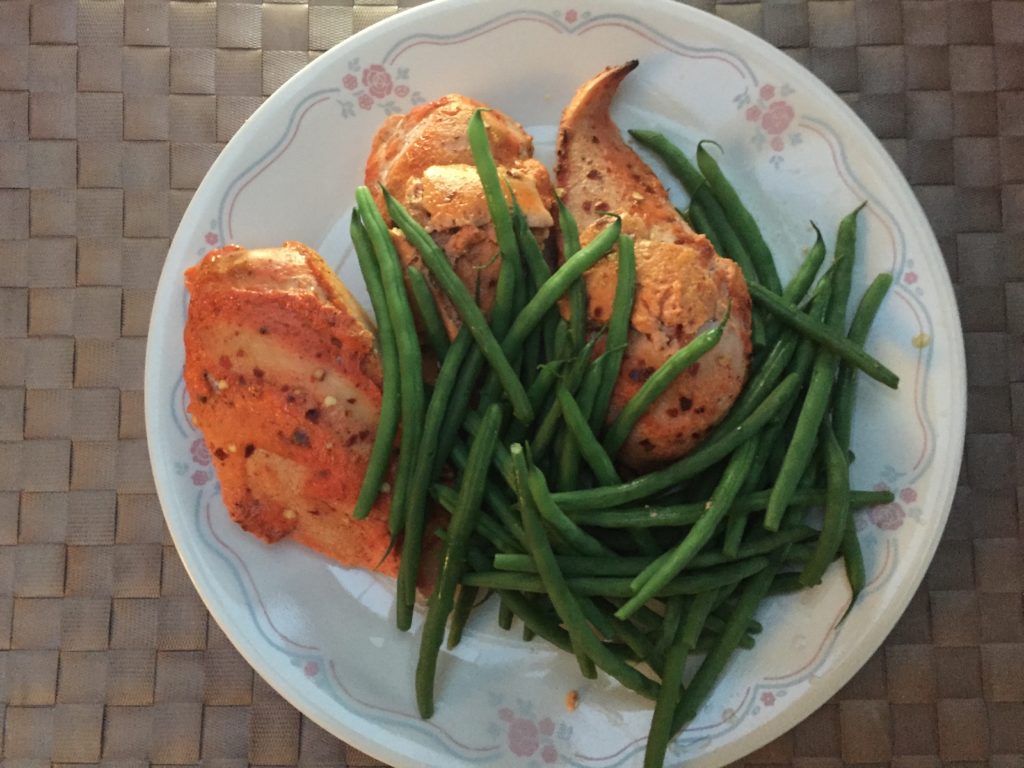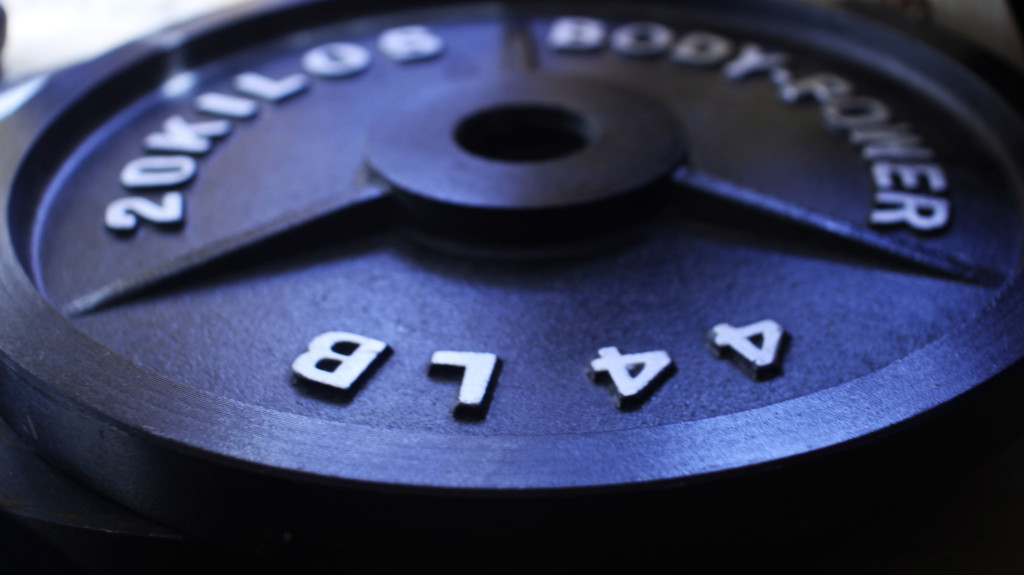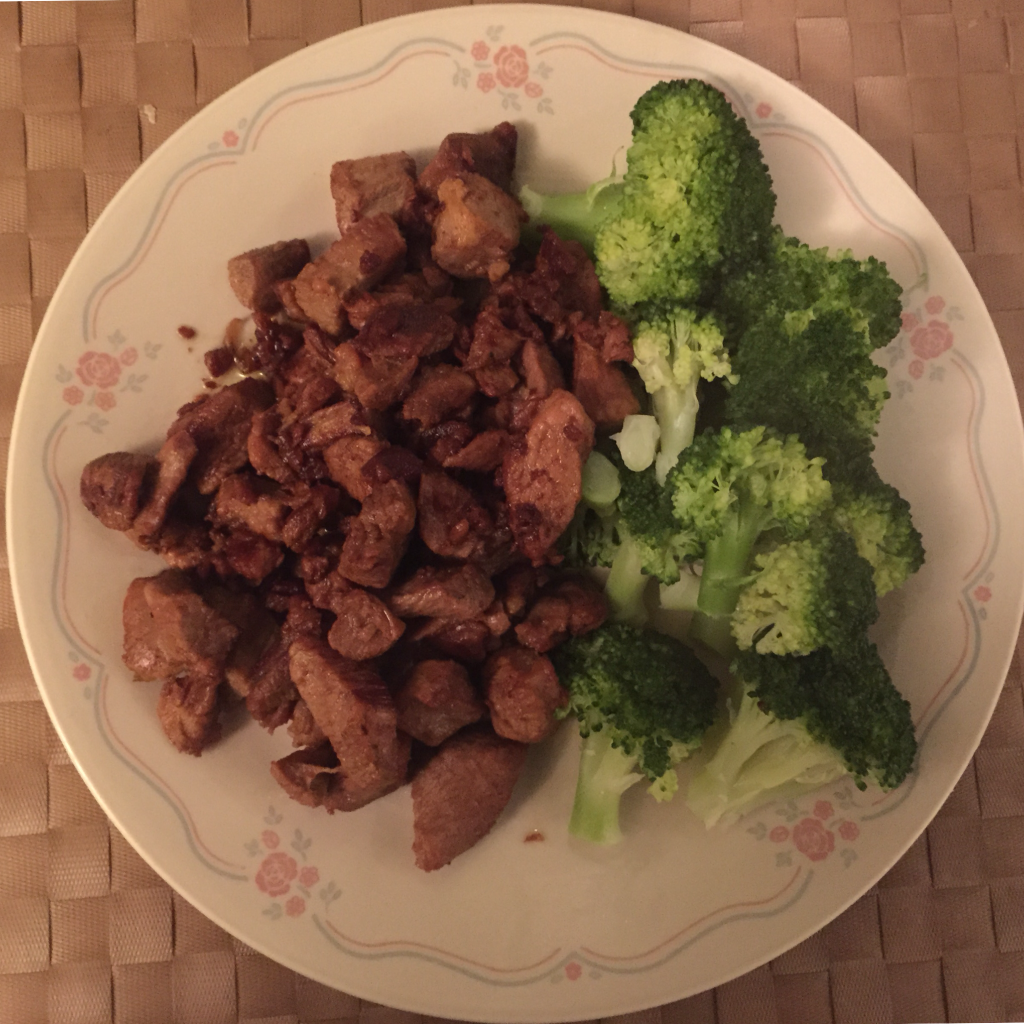
Diet, diet, diet!! Good old dieting. If you’re like the majority of people who get into this wonderfully addictive (sometimes borderline obsessive) thing called fitness, you’ll know doubt already be aware of the importance of nutrition and how eating appropriately plays into the ultimate outcome of your health and physique.
So today ladies and gents, we’re going to break down and systematically cover the fundamentals of setting up the eating portion of your fitness plan, and getting you on track to blasting through your goals like no tomorrow.
Step 1: Set the appropriate energy balance (caloric intake) for your goal
Motor vehicles run on petrol/ diesel, similarly the body runs on energy. Calories are simply energy matter. When you overfill a bucket with water it spills over.
Similarly when you overeat, or otherwise take in more energy than the body requires to maintain your current body weight, guess what you gain weight. Do the opposite and you lose weight.
Pretty straightforward, right?
Only there’s more to it than that.
Whether your aim is to build lean tissue, lose body fat or both, its critical to fuel the body with enough energy so that it has the necessary reserves to function optimimally. The knock off effect being, you get to your goal in the fastest, most efficient way possible.
Start by figuring out your unique maintenance calories.
Maintenance intake = the number of calories it takes for your body to sustain your current bodyweight on a daily basis.
You can use an online calorie calculator to get an idea.
For Fat loss:
If you want to lose “body fat” not “weight” begin by reducing your caloric intake gradually by about 250 cals the first week of the diet, the following week go down again by another 250. The idea is to ease the body into the diet, that way you don’t become subject to wild caloric swings and fall of the wagon.
Aim to go no lower than 500 calories below maintenance. Too drastic a deficit will give way to eventual stalling out of fat loss and increase the likelihood of uncontrollable cravings and ultimately binges.
For muscle growth:
Before you go any further, ask yourself this!!
Are you trying to gain weight or are you focused on sculpting your body?
Here’s the deal.
You don’t need a massive surplus of calories to grow a few lbs of extra, dry, lean muscle tissue. A small surplus of 250-500 cals over maintenance is plenty to trigger growth, combined with an appropriate training regiment that focuses on stimulating the muscles and gradually increasing overall strength.
You can eat 1000-2000 cals over your body’s daily requirements, but unless you’re extremely active and burning energy all the time, all you’re going to do is lay down plenty of new fat mass in relation to the small amount of muscle gained.
The body simply can’t build and recover faster beyond a certain capacity, and no amount of additional calories or protein will change that fact. There’s simply no way the body can recover from training and the stress of day to day activities and build 10lbs. of pure muscle in 4 weeks.
The exception to this is in the event an individual is using exogenous hormones, which greatly enhances the body’s recuperative abilities and ability to put on muscle mass faster than a natural pace. But even so, these hormones can provide only so much of an additional response.
If the aim is to increase muscle mass, whilst avoiding unsightly, not to mention counterproductive fat gain, shoot for roughly a 0.5-1lb-bodyweight increase per week max. No more. Any additional bodyweight will likely be adipose (fat tissue).
That translates to approximately 1-2lbs of lean, dry muscle tissue a month and also covers some of the additional fluid and glycogen stored in the muscles, which also counts towards lean size.
Step 2: Dial in your macros
High carb, low carb, high fat, moderate protein etc. You can essentially utilize any macro breakdown you want. Bear in mind however, it has to help you get to your desired outcome. If it doesn’t aid you in achieving your goals, it’s not the right breakdown for you and you need to make some adjustments.
The reality of the situation is you’ve got to be prepared to experiment with your body and unique metabolism.
Some people do well on low carb, higher fat diets, whilst others do better with more carbs and lower fats.
I recommend playing around with the different macros, adjusting carbs and fats to see how your body responds to the food sources you feed it.
If you eat a carb heavy meal and you begin to feel lethargic, switch to a fat and protein based meal and assesses your energy levels.
REMEMBER TO LISTEN TO YOUR BODY. It will constantly give you feedback, but you’ve got to be willing to listen.
Protein:
The building blocks that comprises the majority of skeletal muscle tissue (by dry weight). The only macronutrient that is capable of repairing & building muscle, skin, hair and nails.
The general consensus is to eat roughly 1 gram of protein per pound (lb) of bodyweight. I think it’s a nice round number and easy to generalize, so I stick with it since I’m so used to it. You could certainly get in less, as low as 0.8 grams and still build muscle, but a higher protein intake seems to improve satiety, which is always a plus on a fat loss plan and isn’t bad for muscle growth either.
These days however, I don’t really track it all that much. I have a pretty thorough idea of the amount of protein I take in from food, so I don’t stress over it.
Initially it’s a good idea to track everything, until you get a firm grasp on the macro breakdowns of your meals and can pretty much eyeball them without much difficulty.
Carbs:
Carbohydrate (Carbon+ water) hence the word carbo-hydrate. Contrary to popular belief I don’t personally think carbs work best as an energy source per say. (At least for me anyway).
That said, a prime benefit of carbs is their ability to spare protein, thus allowing it to do its intended job of repairing muscles and other cells, while the body uses the glucose (breakdown of carbs into sugars) from the carbs to fuel the brain and muscles. That’s primarily the reason blood sugar tends to drop during and after intense exercise.
Carbs do an excellent job of bringing water into muscle cells, helping the body achieve a full, hard look. This is where people get the idea that carbs build muscle. They don’t. Only protein can build muscle.
Carbs push water and increase glycogen stores in the muscles, leading to a fuller, bigger looking muscle. (Think of it like filling a balloon with air). The insulin response they generate also helps to shuttle protein and nutrients into the muscle cells. (For the sake of simplicity and space we’ll delve into that in future).
The problem with carbs is people don’t know how to customize and match their carb intake to their unique body structure and metabolism.
They fall into one of two camps. Either they eat too many carbs, over fill their glycogen stores in the muscles and liver, resulting in a soft (lacking hardness & definition) & bloated look.
On the flipside there are those who go super low carb (no more than 30grams a day) for extended periods of time, drastically depleting all the body’s glycogen stores & excreting massive amounts of water in the process, leading to a dry and conditioned (ideal), but much flatter, (lacking fullness and size) depleted, undersized and stringy look. (This in combination with overemphasis on long, drawn out sessions of cardio and training for far too long in a depleted state only escalate the situation).
Getting the “right” amount of carbs for your body to look and perform it’s best is largely an individual process and no damn generic formula or calculation can give you the correct amount.
YOU’VE GOT TO DO SOME ACTUAL FIGURING OUT. GRAB A PEN AND PAPER OR A PULLUP THE NOTES APP IF YOU HAVE AN IPHONE AND WRITE DOWN THE FOLLOWING:
- Jot down the quantities of food and the impact it has on your body.
- How does it make you feel after eating it?
- How does it affect the look of your body?
The reality of the situation is this.
Carb intake will vary depending on your overall activity level, the intensity of your training and how insulin sensitive your body is.
There’s no clear-cut ratio or magic number of carbs that’ll be suitable for everybody.
If you’re an insanely active individual, engaging in some form of physical activity virtually everyday a general rule of thumb is to consume 1-2 grams of carbs for every lb of bodyweight. Some (rare) people can get away with more, but many will get by fine on less.
I’ve gone as low as 30 grams a day and it takes some getting used to. Usually if implementing more fat, I’ll scale carbs back to around 0.5-0.6 grams per lb of bodyweight. (Which is a nice sweet spot for me).
I would experiment by pulling carbs out for a period of at least two weeks and gradually re-introduce them. (Remember to increase fat intake slightly to compensate for the lake of energy coming from carbs if you go this route, otherwise you’ll experience a lot of hunger, cravings and just generally feel like crap).
If you carry plenty of body fat, which is essentially stored energy, lowering your carb intake is one effective means of reducing caloric intake, which overall results in fat loss. (One of the biggest reasons for this is that a great many folks are just prone to over eating carbs. Also it doesn’t help that most of the typical junk that people tend to overeat are a combination of carbs and fats, or mainly carbs).
However, the buck doesn’t stop there. It would be criminal not to mention the certain hormonal and metabolic responses that can occur from a reduction in carbs. (This is a more complex topic, that we’ll save that for another post).
Fats:
Good old fats. Although people are coming around to the realization that the consumption of dietary fats are not the root cause of obesity, heart disease and other associated health problems, they still receive negative coverage.
Fats actually play a vital role in the production of hormones like “the big daddy” testosterone, which is pretty damn important when it comes to building muscle (among other things).
Fat is also a necessity when it comes to absorbing fat-soluble vitamins like A, D, K and E, which is important for overall health and wellbeing.
They also make foods taste better. PERIOD. If you’ve ever been on a low fat diet for a period of time, the damn pesky feeling of being hungry and not satiated all the time is just problematic, especially when dieting to lose body fat and overall energy intake is limited, coupled with the fact that most individuals don’t have the ability to endure the hunger. It’s a potentially detrimental situation.
Although it’s a good idea to keep some fats in the diet, it’s equally critical not to get too carried away. Going overboard on fats, even in the absence of carbs can attribute to weight gain and ultimately not getting quite as lean as you’re hoping.
Be mind full of the fact that fats, calorically speaking, are the densest of the macronutrients, coming in at 9 cals per gram. Whereas, protein and carbs come in at 4 cals per gram each.
Generally speaking, if you go the higher carb route it’s a good idea to keep fats around roughly 20-30% of your caloric intake. If dropping the carbs in favor of the higher fat route about 50-60%.
Personally, if I’m eating more carbs, I drop my fat intake to around 0.6 grams per lb of bodyweight. If utilising the higher fat approach, I go up as high as 1.5 grams.
This is simply what works well with my physiology.
Again you’ll have to experiment with the ratios and tailor them to your body.
DO THE DAMN WORK. Invest in yourself and don’t expect anybody to give you all the answers because they simply can’t. They’re not you. Nobody knows exactly how your body reacts to certain foods and calorie/macro breakdowns any better than you.
Step 3: Select your preferred meal frequency
All right, lastly you’ll want to structure the number of meals you’ll be aiming to meet each day to get in the appropriate nutritional content and energy.
People like to slam bodybuilders and their eating habits, but hey it works for them. It meets their needs. If you’re one of those individuals that actually enjoys eating smaller portions, plus it works for and sustains you, who should dictate and tell you it’s no good for you and doesn’t work?
Ultimately, you’ve got to put in some time, effort and actually experiment and try different things until you find what functions well for you.
My Personal eating arrangement
Intermittent fasting is an incredibly useful and effective tool for reaching and maintaining a low body fat. (Case in point, see my picture to the side).

However, let’s be frank here. It’s not magical and it’s certainly not the only way to build muscle or achieve fat loss.
I’ve personally been doing a variation of IF, pretty much daily for the last 5 years because I enjoy going periods through the day on an empty stomach. I feel good, have clarity and am more in tune with my body.
For those curious, I usually eat 3 (fairly large) meals a day, sometimes 2, depending on my preference & schedule. I aim to fast around 16-18 hrs, but these days I really don’t rigidly concern myself with sticking to a set – eating window anymore. My body naturally likes to go longer without food and so I do what comes natural to me.
Besides, I thoroughly enjoy the feeling of sharp, laser like focus and clarity I get during the earlier part of the day, as a result of not having anything sitting in my stomach.
I made the switch from tracking calories and macros, to finally eye balling my food. I’ve got a pretty good idea of what I’m taking in nutritionally, from the vast amount of time I’ve invested prior into identifying and tracking my unique nutritional requirements. (Which will vary, depending on my personal goals). I usually stick with the same foods consistently, and that keeps things simpler. But make no mistake; I still have a very good gauge of what I’m eating.
To me, this is what flexible dieting really is about (Or should be anyway). Having control and not being restricted or limited by meal timings, frequency and being able to roughly know just how much quality, nutritionally dense foods you’re consuming.
Eating a bunch of crap for the sake of it, doesn’t factor into my lifestyle. You should be able to fit your eating preference to your lifestyle, rather than the other way around.
A word on “flexible Dieting” and IIFYM (If it fits your macros)
Can you consume some junk food, sure. In all honesty though, a lot of people have turned it into a full-blown license indulge in all manner of shitty foods just for the sake of satisfying their taste buds.
If you’re able to get in sufficient macro (proteins, carbs, fats) & micro (vitamins and minerals) nutrients, then by all means go for it. As long as you’ve got your energy balance dialed in and you’re not going overboard it’s perfectly fine to indulge a little.
Do you need to indulge and eat your favourite junk meals?
Absolutely not.
Lets be clear.
Just because you can eat whatever you want and get away with it, doesn’t mean you need to. There are no magical physique benefits or nutritional properties in those foods that make losing fat or building muscle any more advantageous than eating nutritionally dense, whole foods.
The consumption of these “treat” foods is more of a mental, psychological and emotional want rather than a necessity.
As part of a smart eating set-up they won’t really hinder your gains, but they don’t really contribute a whole lot either.
So have them if you want, fully content with the knowledge that as long as your energy balance and macros + micros are where they need to be, you’re not doing any real damage.
In closing, if you break everything down the way I’ve just done above, eating appropriately for your physique/fitness goals really isn’t quite as daunting as it initially seems.
When you get back to the roots of fitness, bodybuilding or virtually anything relating to physical culture, health was of primary importance.
At its heart, fitness really is firmly based on making lifestyle choices that greatly improve and promote the state of health.
This article has lasted much longer than originally intended, but then again there was a lot to cover.
Train intensely, eat intelligently & watch the magic unfold.




 In the last article we covered training to attain the
In the last article we covered training to attain the